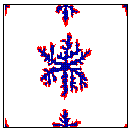
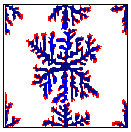
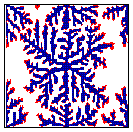
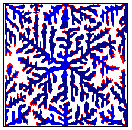
Anisotropic Curvature Driven Evolution of Plane Curves Using so-called Phase-Field Formulations
The crystal growth in undercooled liquids is governed by heat equation in solid and liquid phases together with curvature dependent motion of interface between two phases. This motion can include also anisotropic effects. Thus the so-called Gibbs-Thomson law for free boundary evolution is given in 2D as geometric equation
v= beta(k, ni),
where v is the normal velocity, and beta is a function of curvature k and the tangential angle ni of the plane curve representing the interface.
One can see beautiful simulations of M.Benes representing crystal growth using phase-field model:
| 
| 
| 
|
However, the simulations need a quantitative validations. For that we compare phase-field equation for evolution of interface with sharp interface description by the so-called curve shortening equation. The comparisons show good correspondence of two approaches. We present several figures where the motion of initial unit circle by anisotropic curvature driven evolution is computed using porous medium like equation (solid lines) and phase-field description (dots).
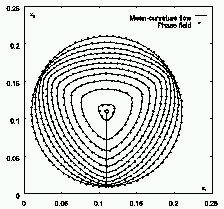
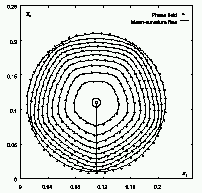
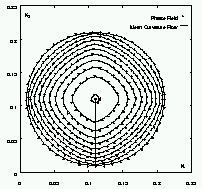
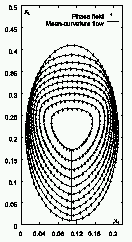
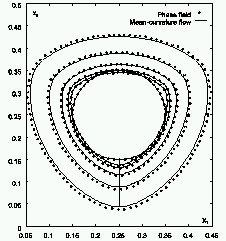
![]() K.Mikula, Solution of nonlinear curvature driven evolution of plane convex
curves,
Applied Numerical Mathematics 23 (1997) 347-360
K.Mikula, Solution of nonlinear curvature driven evolution of plane convex
curves,
Applied Numerical Mathematics 23 (1997) 347-360
![]() K.Mikula, J.Kacur, Evolution of convex plane curves
describing anisotropic motions of phase interfaces,
SIAM J. Scientific Computing, vol.17 No.6 (1996), 1302-1327
K.Mikula, J.Kacur, Evolution of convex plane curves
describing anisotropic motions of phase interfaces,
SIAM J. Scientific Computing, vol.17 No.6 (1996), 1302-1327